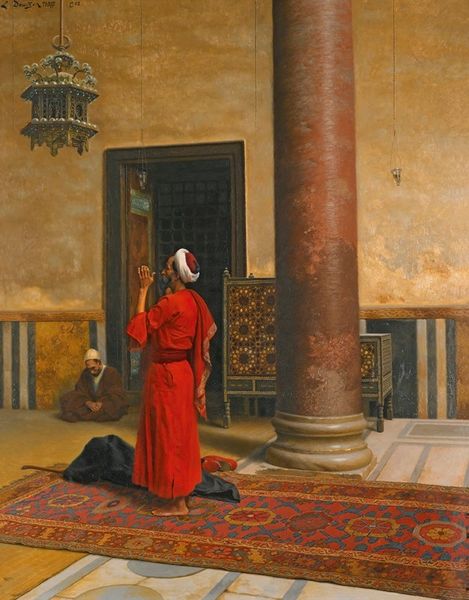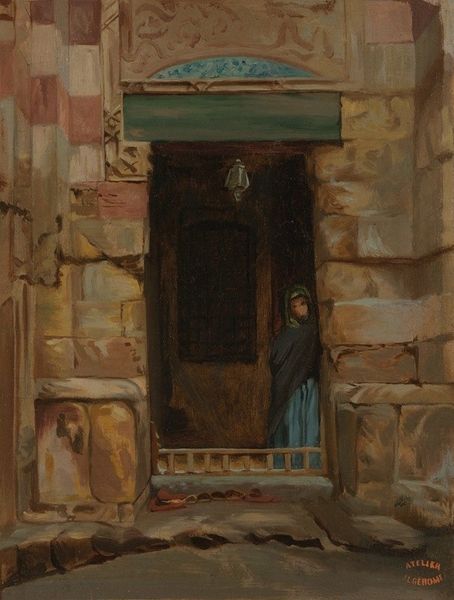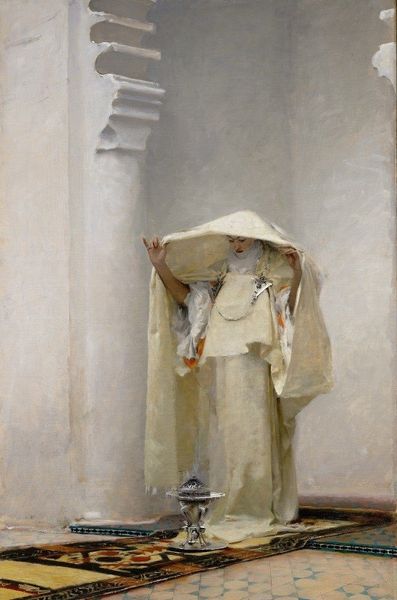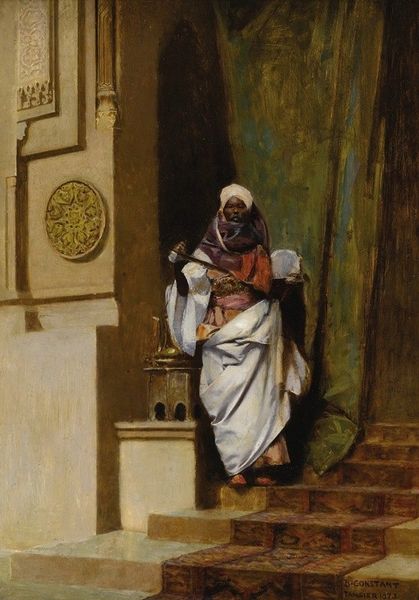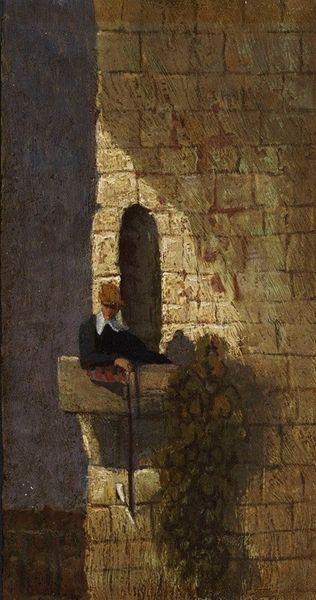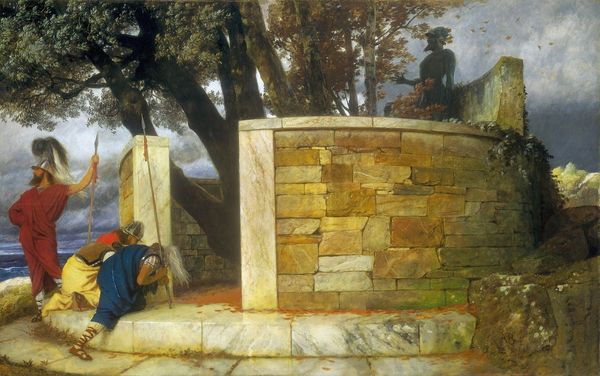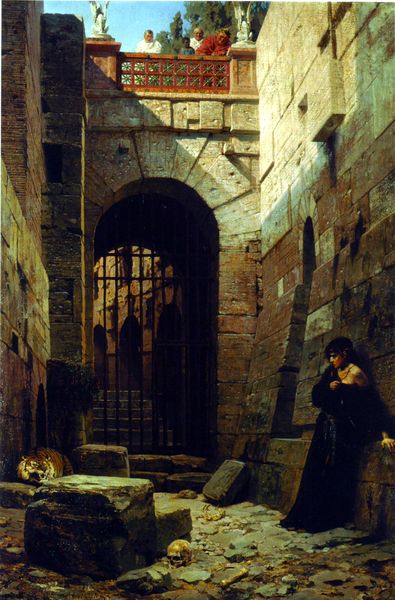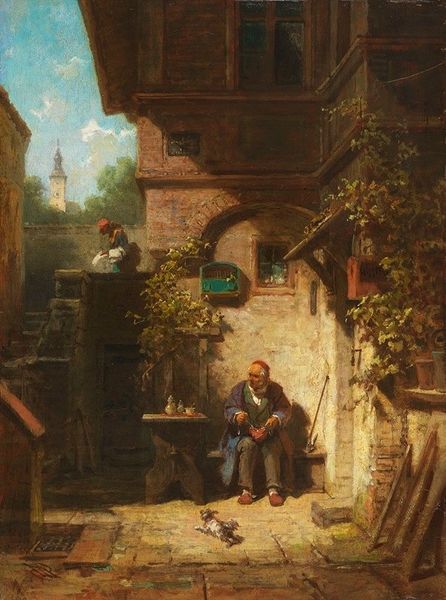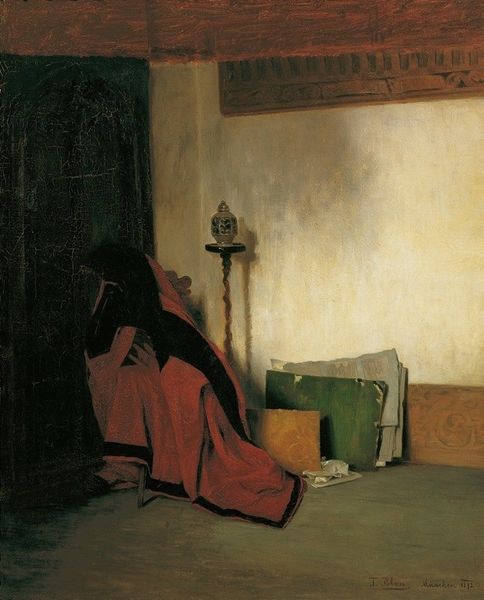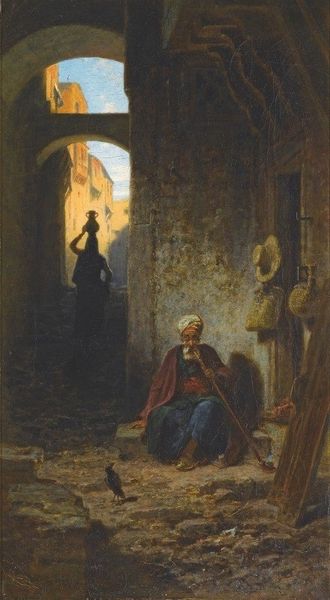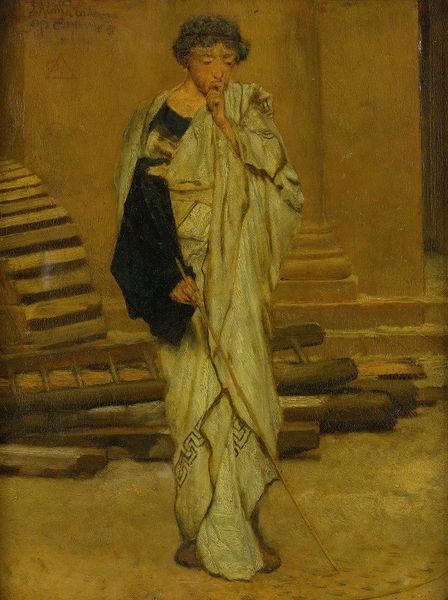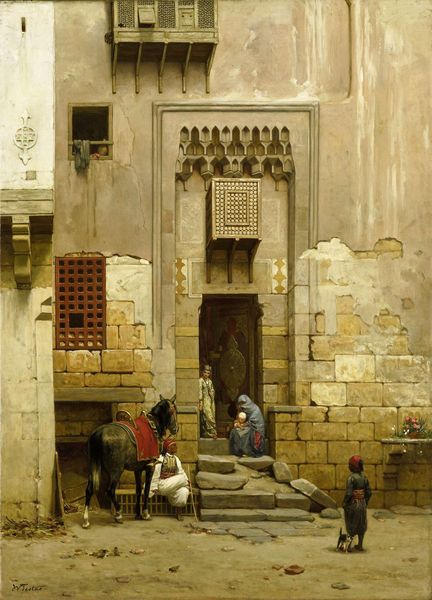
painting, oil-paint
#
figurative
#
painting
#
oil-paint
#
painted
#
figuration
#
oil painting
#
underpainting
#
orientalism
#
genre-painting
#
academic-art
Copyright: Public Domain: Artvee
Editor: This is "Before the Mosque" by Ludwig Deutsch. It's an oil painting, though undated. I'm immediately struck by the texture of the stone, and how the light plays on its surface. What stands out to you when you look at this piece? Curator: What fascinates me is the way Deutsch meticulously recreates architectural surfaces using oil paint. The very materiality of the stone - its rough texture, its aging process evident in the chipped edges – this becomes a focal point. Consider the labour involved in representing such detail and the social context it implies. How does Deutsch's focus on this architectural setting reinforce notions of "the Orient" as something timeless, almost fossilized for Western consumption? Editor: So, the building itself becomes a commodity, depicted in painstaking detail for an audience back home? Curator: Precisely. Deutsch is selling not just an image, but a feeling of authenticity rooted in his representation of materials. This is oil paint mimicking stone. The act of artistic production, with its brushes, pigments and underpainting – visible upon closer inspection – reflects a broader consumption pattern in 19th-century orientalism. Look closely: where is the human figure placed within the scale of the overall architecture? What kind of relation to the means of production and their consumption, is it conveying to us, here, today? Editor: I see. He’s almost dwarfed by it. The labour of building is absent, we see only this solitary figure existing amongst this large stone work. He becomes part of that material culture. Curator: Yes, he’s both present, and simultaneously consumed by it. Deutsch encourages the viewer to admire this spectacle by buying into a romanticised image of the ‘Orient’, mediated through brushstrokes and paint, carefully transported to Western drawing rooms as another coveted trophy. Editor: That makes me think differently about the piece. I had been focused on the light, but I hadn't considered the wider context of its production and consumption as this symbol of cultural exchange. Thanks for illuminating it! Curator: My pleasure! Analyzing the material context helps unlock these often-overlooked dynamics in even the most seemingly straightforward paintings.
Comments
No comments
Be the first to comment and join the conversation on the ultimate creative platform.
